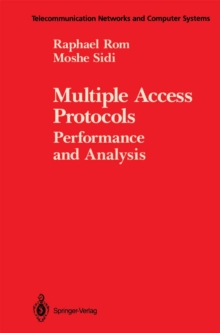
Metropolitan Area Networks PDF
by Marco Pellegrini, Enrico Gregori, Luciano Lenzini
Part of the Telecommunication Networks and Computer Systems series
Description
With the continuing success of Local Area Networks (IANs), there is an increasing demand to extend their capabilities towards higher data rates and wider areas.
This, together with the progress in fiber-optic technology, has given rise to the so-called Metropolitan Area Networks (MANs).
MANs can span much greater distances than current LAN s, and offer data rates on the order of hundreds of Megabits/sec (Mbps).
The success of MANs is mainly due to the opportunity they provide to develop new networking products capable of providing high-speed commu- nications between applications at competitive prices, which nonetheless give an adequate return on the manufacturers' investments.
A major factor in of appropriate networking standards. achieving this goal is the availability Fiber Distributed Data Interface (FDDl) and Distributed Queue Dual Bus (DQDB) are the two standard technologies for MANs for which industrial products are already available.
For this reason, this book focuses mainly on these two standards.
Nowadays there are several books dealing with MANs, and these look mainly at FDDI (e.g., [2], [92], [118], [141]).
These books focus primarily on the architectures and protocols, whereas they pay little attention to per- formance analysis.
Due to the capability of MANs to integrate services, a quantitative analysis of the Quality of Service (QoS) provided by these tech- nologies is a relevant issue, and is thus covered in depth in this book.
Information
-
Download - Immediately Available
- Format:PDF
- Publisher:Springer London
- Publication Date:06/12/2012
- Category:
- ISBN:9781447109099
Other Formats
- Paperback / softback from £81.69
Information
-
Download - Immediately Available
- Format:PDF
- Publisher:Springer London
- Publication Date:06/12/2012
- Category:
- ISBN:9781447109099










